Stream On!

Streaming giants like Netflix, Amazon Prime, Disney, Hotstar and others have revolutionized Indian screen entertainment. These corporate giants are unleashing their financial heft to cater to the massive global Indian audience—and in the process, the same old song-dance-romance formulae of a bygone era have given way to bold, contemporary themes, a profusion of diverse choices, and new talent.
In the early 70s in India, Doordarshan, the government-run broadcasting channel, was about the only choice on TV. Chhaya Geet, a weekly program featuring Bollywood songs, a film every Sunday, and live cricket matches were all the rage in the name of screen entertainment in those days. Daily news was delivered without theatrics. Later, in the 80s, weekly TV serials like Hum Log and Nukkad, and the epic Mahabharata were giddily awaited every week. Kids rushed to finish homework, mothers hurried through their chores, and fathers scrambled to get home in time to catch those glorious moments.
Sure, people loved their TV with passion in those days, but compared to the unbelievable profusion of choices that today’s consumers have in screen entertainment, those seem like primitive times. We have now gone to the other extreme—even the most enthusiastic fans of screen entertainment can’t keep up with the barrage of choices of movies, shows, serials, sports, documentaries and a boatload of other options, each more enticing than the other.
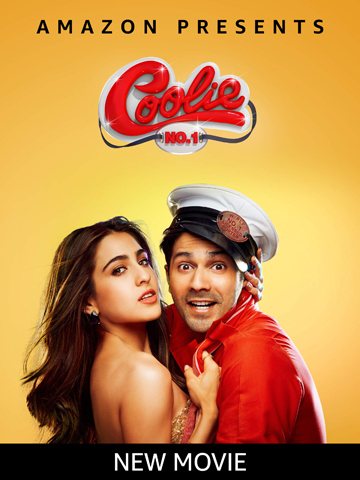
Many trends as well as infrastructure developments over the decades have made this transition possible. A far cry from the monopoly of Doordarshan, Indian television, keeping in line with the world, saw a massive profusion of channels in the last couple of decades of the past century. Both broadcast and satellite channels from regional to national kept sprouting up till people lost count. In the area of big screen, cinema multiplexes started cropping up like mushrooms in cities and towns throughout India. And with globalization gaining ground since the 90s, this big screen network for Bollywood and other regional Indian cinema soon started extending worldwide. In the U.S., Indian films releasing in national cinema chains like AMC Theaters and Regal Cinema may have seemed like a pipe dream only a few years back. Now, some big-banner Indian movies are competing even with Hollywood releases in box office charts.
Finally, even before the pandemic hit us in 2020, online streaming had soon became the next frontier in screen entertainment. And even though this phenomenon is comparatively recent, its widespread popularity would have us believe it has been around since the birth of breakfast cereal. We are spoilt silly with endless choices. Multinational Corporations (MNCs), and their collaborations with big Indian production houses have given Indian viewers a relentless barrage of choices in recent years through online streaming.
While online streaming was already on the uptick, the pandemic-induced lockdowns suddenly put this trend on steroids, so to speak. Traditional filmmaking and theatrical releases came to a sudden halt. In those initial weeks of the first lockdown, it seemed that viewers would have to endure a long recess from watching much of anything other than reruns on TV. Even sports events and much anticipated annual award shows ground to a halt.
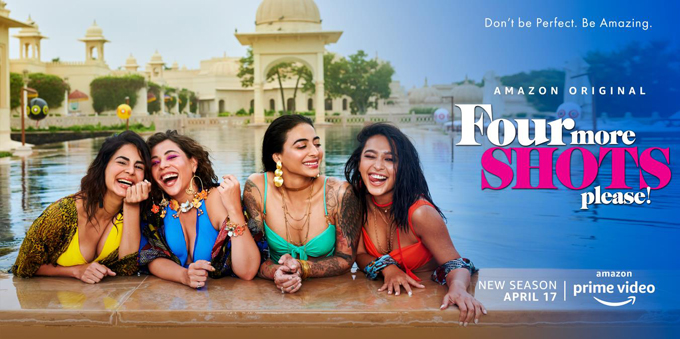
Shifting Strategies
But just like nature, both producers and consumers of entertainment abhor a vacuum. Streaming giants soon saw a great opportunity in the new normal brought on by the lockdowns.
Shows like Sacred Games on Netflix, Paatal Lok on Amazon Prime Video, Special Ops on Disney+Hotstar and many others kept audiences entertained during a difficult time. With children stuck at home as well, shows like Netflix’s first Indian original animation serial for kids Mighty Little Bheem became instant hits.
In the initial weeks and months of the pandemic, the halt in theatrical releases of movies in favor of digital- only releases was seen by industry speculators as a setback. But bigwigs like Karan Johar soon embraced streaming as a viable and worthy avenue to showcase their prized productions. Johar now believes there has never been a better time to tell stories. “Today a filmmaker with an interesting idea has so many avenues to connect with the audience. The global reach of Netflix gives us the opportunity to have this powerful story resonate with an audience around the world,” he says.

Bollywood’s top-billed actors who wouldn’t have dreamed of signing up for films made for streaming only, soon followed suit. Hindi comedies Gulabo Sitabo starring Amitabh Bachchan and Ayushmann Khurrana, and Coolie No. 1 starring Varun Dhawan and Sara Ali Khan are two of the 19 new films that made digital debuts under the Amazon umbrella. “All these titles did strong numbers,” says Gaurav Gandhi, Director of Amazon Prime Video, India. “Gulabo Sitabo and Shakuntala Devi quickly became the most watched movies on the service in India, and our most watched Hindi movies around the world.”
[Right] Gulabo Sitabo starring Amitabh Bachchan and Ayushmann Khurrana, was one of the 19 new films that made digital debuts last year under the Amazon umbrella.
Indian-Canadian filmmaker Dylan Mohan Gray, who directed Bad Boy Billionaires, a Netflix docuseries about India’s most infamous tycoons, believes that these stars are now warm to the idea of digital-only releases because of “the prestige related to it!”
Priyanka Chopra Jonas plays a lead character in The White Tiger, based on Aravind Adiga’s Booker Prize-winning novel by the same name. It ranked first in Netflix’s Top 10 films list in sixty-four countries and made BAFTA’s long list in seven categories. Following the success of The White Tiger, Adiga and Netflix have already partnered to produce an adaptation of Aravind’s 2020 -released novel Amnesty.
Actors like Sanjay Kapoor and Raveena Tandon have gained a new lease of life in their careers. Delhi Crime, starring Shefali Shah of Monsoon Wedding fame, became the first Indian series to win in the Best Drama category at the International Emmy awards. Sushmita Sen made an impressive comeback as a drug kingpin in Aarya. A mother of three, she is forced to take on the market wolves single-handedly when her husband, involved in an illegal drug trade, is shot dead. Madhuri Dixit Nene plays a global superstar, mother and wife in Finding Anamika.
Streaming on Steroids!
According to a recent Ernst & Young report, India’s media and entertainment (M&E) market is strategic for global players. With a population of over 1.3 billion, along with affordable smartphones and mobile data, India was a massive market for online screening platforms even before Covid-19 hit the world last year. The widespread availability of competitively priced 4G services even in rural areas, as well as the demographics of the country have helped this trend. The average age in India is 29 years—the young are a lucrative market for entertainment options.
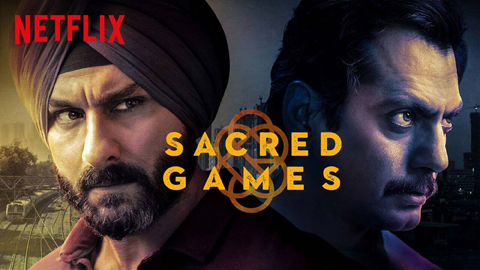
[Left] Infusion of corporate dollars, a willingness to take on gritty themes, and top notch production that benefits from international collaborators, has all helped both the quality and variety of shows and serials. Sacred Games is one striking example of this new breed of slick and entertaining shows.
The pandemic-induced lockdowns have only managed to surge the popularity of streaming services. Dylan Mohan Gray says there is an “arms race” underway between international and domestic platforms competing for Indian viewers. With an estimated 570 million internet subscribers, India has the world’s second highest number of internet users after China. A recent CII-BCG industry report pegged the number of subscriptions to streaming platforms at close to 125 million—up by about 60 percent since 2018. The market value of this sector is expected to grow to $2.7 billion by 2024.
These numbers are not lost upon MNCs like Netflix and Amazon who are unleashing their big corporate dollars to capitalize on the Indian market.
“We want to be a home for India’s finest filmmakers where their stories travel to more people than ever before,” says Shristi Behl Arya, Director of Original Films at Neflix-India. According to Reed Hastings, CEO of Netflix, the company has spent $420 million in 2019-20 to produce and license Indian content including in regional languages like Tamil and Malayalam. In a recent article in India Today, Netflix announced 41 new Indian titles—13 films, 15 series, four documentaries including Indian Predator (a Vice Media and India Today’s suspense series about India’s deadliest killers), six stand-up comedy specials and three reality TV shows.
Amazon Prime recently launched a mobile-only plan to take on its rivals Netflix, Zee5, Disney+ Hotstar and others. It now offers Amazon Prime Video content as a standalone offering, without requiring the purchase of other Prime membership benefits. Aparna Purohit, Head of India-Amazon Originals, revealed that the company currently has 31 films and series in variousstages of production and post-production, with a further 50 in development.
Hollywood bigwigs are also riding the streaming wave. Brad Pitt, Christian Bale, Will Smith and others have visited India to promote movies for streaming channels. “Big paydays and motion picture-level production values have attracted top-tier talent, and I don’t see signs of this stopping,” says Gitesh Pandya, Editor, Boxofficeguru.com.
Indian content, dubbed or with subtitles, streamed abroad is gaining currency with international audiences. “Indian shows are consumed around the world, one in five customers of our Indian originals is outside India. Our international shows get coverage—with the dubs and subs,” explains Gaurav Gandhi. Reed Hastings, CEO of Netflix views Indian content as a “great export.”
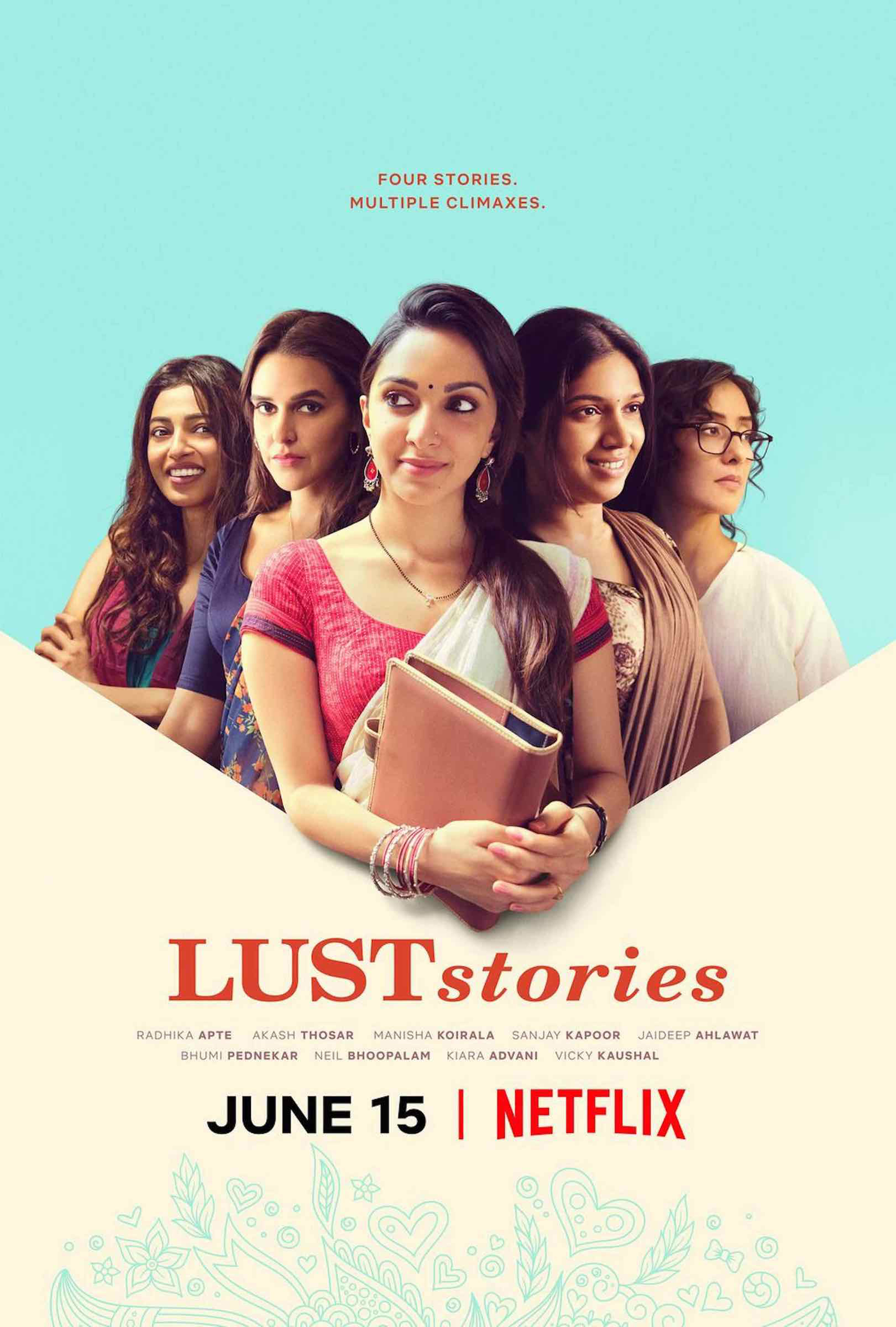
Changing Sensibilities
The drastic structural changes in the world of screen entertainment has had a corresponding effect on content. Gone are the days of time-tested formulaic films with bankable stars like Amitabh Bachchan and Rekha in the 80s, or Shah Rukh Khan and Kajol in the 90s, who enthralled audiences with feel-good movies tailored with preordained happy endings.
[Right] In Lust Stories, four vignettes open with Pixar-quality animated credits that lend levity to the stigmatized scenarios they address. In one of the stories, an unvarnished Manisha Koirala plays an unfaithful wife who in a different era would be cast as a sinner.
The rising popularity of streaming in the global Indian population is not only because of the relatively new wave of sophisticated infrastructure and robust foreign investment but also the superior and diverse content that it offers. Shows like Sacred Games with Saif Ali Khan and Breathe-Into the Shadows with Abhishek Bachchan boast of stellar performances by Bollywood bigwigs. But the star-struck diaspora also applauds previously unknown actors for portraying the average Indian with intuitively raw and realistic performances. Actors, directors and producers are enjoying the opportunity to develop content that wouldn’t pass muster in risk-averse mainstream Bollywood films.
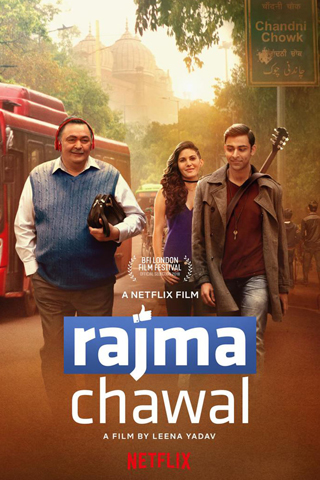
According to an article published by Deutsche Welle, a Germany-based international media company, “Long-form immersive storytelling like this was almost unknown in India before the stream-ing boom.”
The article further elaborates: “A more critical and nuanced view of Indian society has come from independent cinema—from the neo-realism of Satyajit Ray’s films of the 1950s and 60s to recent works by the likes of Ritesh Batra (The Lunchbox) and Anurag Kashyap (Gangs of Wasseypur). But before Netflix, these indie directors never had the money to make big movies that were off the beaten path, or the opportunity provided by global streamers to have their work seen by millions worldwide.”
New Delhi-based independent filmmaker Sidharth Srinivasan echoes Gray’s views, “The arrival of OTT (“over the top”—the industry’s term for streaming) platforms came as a boon to independent filmmakers like myself who otherwise had to struggle to secure distribution for our films. In India, unlike America, the onus of prints and advertising (P&A) falls on the producer which makes theatrical release a very expensive affair— roughly double a film’s production budget. Given their openness to innovative scripts and original ideas and the complete absence of box office pressure, the OTTs held a lot of promise for those working outside the mainstream.”

Mainstream Bollywood with its penchant for extravagantly choreographed item numbers does not have the luxury of time to slow dance with subtle sensibilities. With streaming platforms, that has changed—there is a massive expansion of themes and talent in both shows and movies. In Taj Mahal 1989, a limited series on Netflix, we watch patiently as a middle- aged college professor dials seven numbers on an antiquated phone. With each pull and release of the dial-up connection, we feel her restless yearnings for the attention and affection of her husband, a poetry-obsessed professor of philosophy.
Taking on Taboos
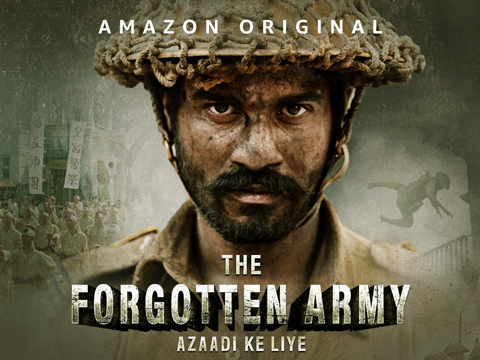
The content on streaming platforms is bold, brave and brazen; and an increasing number of Bollywood stars are shining light where shadows loomed large. Controversial, condemned and cloaked realities of daily life are showcased in astute, unrushed storylines that are not bookended with culturally sanctioned solutions.
In Lust Stories, four vignettes open with Pixar-quality animated credits that lend levity to the stigmatized scenarios they address. In one of the stories, an unvarnished Manisha Koirala plays an unfaithful wife who in a different era would be cast as a sinner. Here, however, the audience is encouraged to view her as the woman-next-door, caught in a marital morass that could mirror their secrets. Series like Delhi Crime that address sinister social issues like rape would never have otherwise been telecast in or beyond India, other than on a festival circuit, if at all.
Streaming platforms have also changed the rules of the game by allowing entertainers of varied ilks and ideals a place at the big boy’s table. And they have welcomed women in the male-dominated arena—like first-time female directors Terrie Samundra of Kaali Khuhi, and Anvita Dutt of Bulbul.
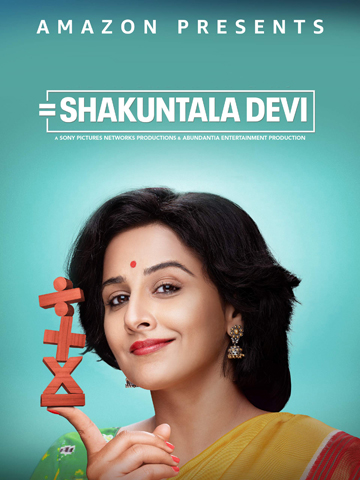
Issues like sexual assault that were once taboo and rarely depicted on screen now feature in thought-provoking narratives. Caste-based racism and corruption—matters that ruffle the feathers of the powerful—are being addressed with fearless detail. Gen Z, progressive in thought and poised to take a stand, can assert itself within the paradigm of entertainment— replacing moral policing of yesterday with spirited activism.
[Left] Shakuntala Devi quickly became one of our “most watched Hindi movies around the world,” says Gaurav Gandhi, Director of Amazon Prime Video-India.
Streaming services have become the place for groundbreaking, realistic LGBTQ representation in shows like It’s Not That Simple on Voot, an India-based on-demand streaming platform. Screenwriter Aditya Basu, who is working on projects for Jio and Disney+Hotstar, says, “The portrayal of an LGBTQ+ character doesn’t have to be limited to issues around sexuality.” There is an increasing willingness and demand for thoughtful representation of queer Indians. Selection Day explores the attraction between two boys in a conservative society. Amazon’s Made in Heaven shines light on sexual minorities with a compelling lead gay character. “Data and trend can help define content strategy and investment for today. But to build loyal communities for the future, we need to be cued into the cultural conversation,” says Chanpreet Arora, Head of Business, Voot.
Controversy and Censorship
Pushing the social and cultural envelope is never easy, anytime anywhere. In a tradition-bound country like India that is seeing a resurgence in right-wing politics, it is that much harder. Sacred Games is embroiled in a legal case over allegedly “harming the reputation” of late Indian prime minister Rajiv Gandhi. Similar fate awaited Mira Nair’s A Suitable Boy which was streamed on Netflix after airing on BBC. Vikram Seth’s astute writing documents in exquisite detail the romantic exploits of the protagonist against the backdrop of India’s recent independence. A kissing scene between the Hindu protagonist and her Muslim lover in a temple stoked the never-dying embers of religious fanaticism.
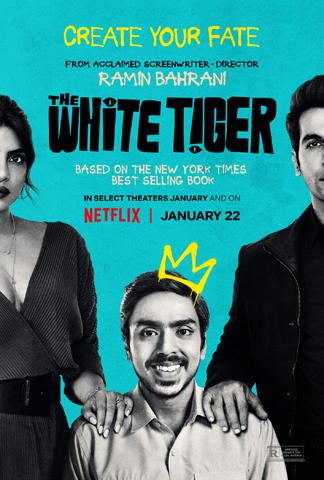
There has also been backlash against true-to-life series like Amazon’s Paatal Lok, which shows police brutality, rape and attacks on Muslims. Rasbhari featuring Bollywood star and government critic Swara Bhaskar that addresses sexual repression was also met with some criticism. Amazon Prime’s web series Tandav has similarly come under fire over its depiction of Hindu gods and goddesses. Even after various scenes were deleted, there are at least ten complaints filed in six states. A children’s rights body is demanding that Netflix’s Bombay Begums be taken down for its portrayal of minors, sex and drugs.
[Right] The White Tiger, based on Aravind Adiga’s Booker Prize-winning novel by the same name, ranked first in Netflix’s Top 10 films list in sixty-four countries, and made BAFTA’s long list in seven categories.
As the Indian government is poised to slap censorship regulations on content streaming on independent platforms, Hastings believes, “The most pragmatic approach would be to self-regulate content.” But it may be too late for that as Indian government seeks to bring news outlets and streaming platforms under the Ministry of Information and Broadcasting which wants to set up a grievance redressal mechanism. Platforms would need to register grievances within 24 hours and resolve them within 15 days. Complaints regarding sex and nudity would need to be removed within 24 hours.
What worries Salil Tripathi, chair of Writers in Prison Committee of PEN International, however, is that with court cases in India dragging on for years, this could have a chilling effect on the future of creative media in India.
Post-pandemic Prologue
“Sending some films to streaming instead of theaters was a necessity for some during the pandemic but I don’t see this as the norm going forward. Both will co-exist. Top talent in Bollywood and Hollywood alike have the desire to see their films play to packed crowds in movie theaters. Just like restaurants balance food served in their establishment along with to-go orders, the movie industry will juggle films for cinemas and films for streaming,” says Pandya. “China’s theatrical box office has already rocketed back to life—2022 is when we should see pre-pandemic numbers again in the US.” Hastings draws similar analogies, “You can have a music service on your phone but you still go to a concert. Or you can cook, and you still go to restaurants.”
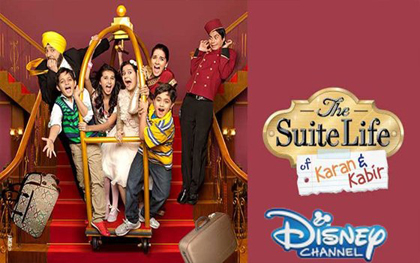
Streaming may have upended traditional TV, but Zoya Akhtar remains committed to the power of theatres. The Gully Boy director explained her stance, “Nothing is going to replace the theatre. When TV came out, they were like this is the end of cinema. The, videos, LEDs and surround sound came out, they were like why go to the theatre now. But since the OTT platforms came to India, the footfalls to cinemas have just increased.”
“Once venues do re-open, the acquisitions strategy will be to look for deals where films can receive a theatrical window of four to eight weeks prior to debuting online. At present, Amazon has managed to strike such deals with the likes of Salman Khan Ventures, Yash Raj Films, and Dharma Productions,” says Purohit.
While racking in revenues will continue to remain the pertinent driving force for streaming platforms, the portrayal and osmosis of traditional and evolving cultural sensibilities across borders is perhaps the more significant and stellar accomplishment of the streaming phenomena. Savor the hassle-free, home-delivered, global gamut of an all-you-can-consume digital buffet.
[The quotes, citations, and data published in this article comes from various sources, such as The Guardian, Deadline.com, DW.com, The Hindu, The Hindustan Times, Netflix and others.
Author of Kismetwali & Other Stories, Reetika Khanna is an Atlanta-based freelance writer who likes to spotlight people with purpose. She has worked with ELLE as a senior features writer, and as an associate features editor with ELLE DÉCOR, Mumbai. For more, go to ReetikaKhanna.com.]
Indian-Americans and streaming: best of two worlds
For Indian-Americans, many, if not most of whom have a foot in both cultures, it’s a great time as consumers of screen entertainment. America is increasingly warming up to not only cross cultural themes but also to minorities making it into the mainstream. Hasan Minhaj’s Patriot Act, produced by Netflix, was the quintessential American show that just happened to be anchored by a charismatic Indian-American. Same goes with Aziz Ansari’s Master of None, and the more recent Never Have I Ever, produced by Mindy Kaling, and narrated by tennis bad boy of yesteryears, John McEnroe.
At the same time, Indian-Americans can and do equally enjoy shows set in India or in regional Indian themes. They are no less a target demographic group than Indians in India for shows like Indian Matchmaking, Sacred Games, Paatal Lok, and many others, as well as for the Bollywood films offering both the tradition-al stories and the increasingly global themes.
Standup comedians appealing to local sensibilities, like Kapil Sharma, Johnny Lever and others, the ones with more cosmopolitan and international appeal such as Vir Das, as well as Indian–American ones such as Hari Kondabolu and Hasan Minhaj offer a broad spectrum of humor for this bicultural viewership.
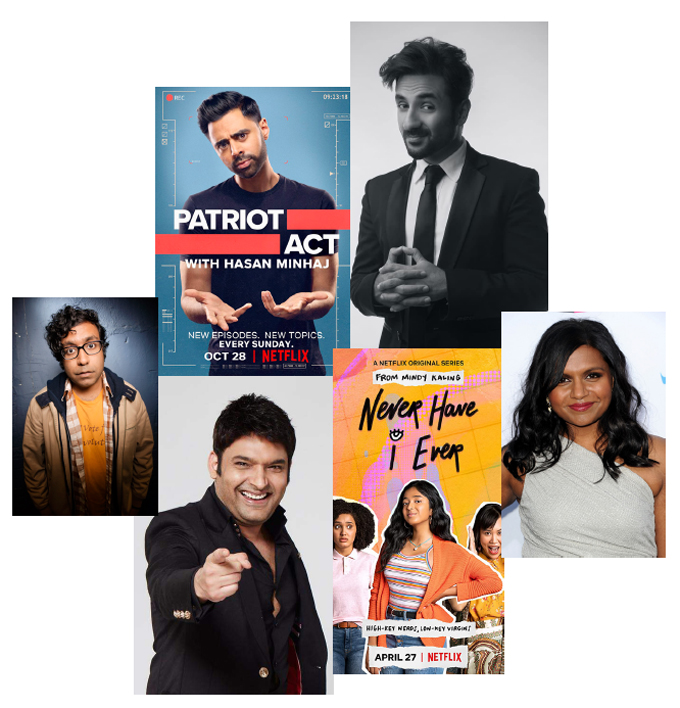
Some recent series and films worth streaming:
- Sacred Games (Netflix) Starring Saif Ali Khan and Nawazuddin Siddiqui, this crime thriller based on Vikram Chandra’s novel is a must watch.
- Delhi Crime (Netflix) A seven-part series that deals with a heinous rape in New Delhi that led to a public uproar is a necessary social inquiry.
- Mirzapur (Amazon) Think The Godfather with more guns & gaalis. This mafia rivalry saga is replete with gritty visuals.
- Tandav (Amazon) Saif Ali Khan and Dimple Kapadia go toe-to-toe in the ruthless pursuit of the gaddi in this thriller series.
- Breathe: Into the Shadows (Amazon) Starring Abhishek Bachchan, this dark and disturbing show will keep you on the edge of you seat.
- Badla (Netflix) A murder mystery, this film showcases Amitabh Bachchan’s prowess in his role as an indefatigable lawyer.
- Bulbul (Netflix) A horror film starring Rahul Bose in a diabolical role, this is a story of love laced with blood.
- Ghoul (Netflix) A brave, bone-chilling horror miniseries set in the context of military might is not for the fainthearted!
- Typewriter (Netflix) A haunted house, Ghostbusting children, and a dog. Some might call this a desi Stranger Things series!
- She (Netflix) Watch a reserved policewoman from a lower middle-class family navigate a male-monopolized world as an undercover operative.
- Leila (Netflix) Directed by the talented Deepa Mehta, this dystopian series will appeal to those who watched The Handmaid’s Tale (Hulu) based on Margret Atwood book by the same name.
- The White Tiger (Netflix) Priyanka Chopra Jonas stars in this film adaptation of Aravind Adiga’s novel about a subservient Indian chauffer who morphs into a successful entrepreneur.
- Sound of Metal (Amazon) Riz Khan delivers a riveting performance as a metal drummer who begins to lose his hearing.
- Pushpavalli (Amazon) A comedy series starring stand-up comedian Sumukhi Suresh that follows the story of a small-town girl expected to live a templated life.
- Afsos (Amazon) A dark comedy, the show follows the narrative of a depressed man’s failed suicide attempts.
- Hasmukh (Netflix) Comedian Vir Das plays a comic whose prowess is powered by murder!
- Rajma Chawal (Netflix) Starring the late Rishi Kapoor this comedy film centers around a father’s earnest attempts to connect with his son through social media.
- Taj Mahal 1989 (Netflix) A series of interlaced love stories that endure—watch for the nuanced unfolding of love over time.
- Lust Stories (Netflix) This anthology of four vignettes about modern relationships is told from the perspective of unsubdued women.
- Made In Heaven (Amazon) The nine-part series created by Zoya Akhtar and Reema Kagti delves into the colorful drama of Indian weddings.
- Indian Matchmaking (Netflix) Reality TV fans will revel in the heady spin on arranged marriages.
- A Suitable Boy (Netflix) A tad slow to gather momentum, this Mira Nair-directed series is an adaptation of Vikram Seth’s celebrated novel set in the 50s.
- Stories by Rabindranath Tagore (Netflix) A must watch for all Tagore fans, this series is a worthy adaptation of the Nobel Laureate’s progressive works.
- Bombay Begums (Netflix) Pooja Bhatt makes an impressive comeback in this saga that etches the intersecting narratives of women across generations and social strata.
- Selection Day (Netflix) Featuring veteran thespian Ratna Pathak Shah, this sports drama is based on Aravind Adiga’s book by the same name.
- Jamtara (Netflix) Inspired by true events, this series transports us to India’s “phishing capital.”
- Cargo (Netflix) This sci-fi drama zeros in on a spaceship where souls are prepped for reincarnation. A Hindustan Times review described the film as “innovative, but inert.”

Enjoyed reading Khabar magazine? Subscribe to Khabar and get a full digital copy of this Indian-American community magazine.
blog comments powered by Disqus










